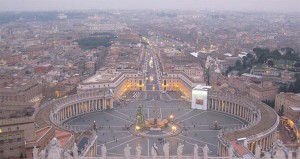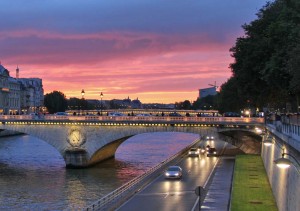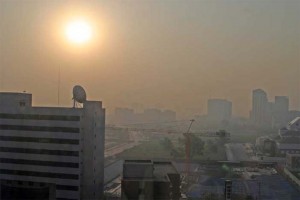Facing worsening pollution problems during an unusual warm, dry December, officials in Rome and Milan have ordered temporary automotive bans next week.
The two Italian cities join a fast-growing club with more and more of the world’s major metropolitan areas ordering drastic steps to deal with air quality issues. Beijing and several other Chinese cities have included automobiles in new restrictions triggered by air pollution red alerts, and the Indian capital of Delhi is debating its own automotive restrictions.
Roman officials were already debating limits on traffic in the city, especially on its famous Via dei Fori Imperiali, the route running by the Colosseum. But they are now enacting broader, if temporary, restrictions to cope with what the Associated Press is describing as “eye-stinging, throat-irritating air.”
(Click Here to see how the new Paris climate accord will impact motorists.)
Officials in the Eternal City say several factors have contributed to the problem, notably the warm, dry weather, with no rain to wash away the smog. Even so, home heaters continue to run, adding to pollution from Rome’s heavy traffic.
The emergency order will see a six-hour ban on cars on Monday and again on Tuesday. Meanwhile, Roman homes and offices must keep thermostat settings at 18 degrees Celsius, or 64 Fahrenheit, and heaters can be run only eight hours a day – though officials admit the rules are likely to be ignored by many Romans.
Milan has also instituted a six-hour automotive ban on Monday, Tuesday and Wednesday.
Even more aggressive steps are being taken in Beijing and other parts of China, where clouds of noxious pollution have resulted in so-called red alerts in 10 cities, mostly in the northeast part of the country. Those alerts have triggered a variety of measures, among other things leading to school closings, temporary factory shutdowns and restrictions on vehicle usage.
Beijing has been facing a series of red alerts in recent months but the problem has been spreading, the port city of Tianjin issuing its first such warning on Wednesday. Red alerts are the highest of four air pollution warnings and come when the problem reaches hazardous levels for at least three consecutive days.
While a variety of factors – notably including China’s dependence on coal-powered generators – contribute to the smog problem, automobiles have become an increasingly serious factor as the number of cars on the road has grown. China is now the world’s largest automotive market.
The red alerts have triggered rules that temporarily ban about half of all vehicles from being driven, based on an odd-even license plate system. But the pollution problem is also pushing lawmakers at both the federal and local levels to look for other ways to reduce automotive emissions. China is expected to end the year as the world’s largest market for electrified vehicles, and demand is expected to continue growing rapidly.
(Click Here for more on the Chinese red alerts.)
Odd-even schemes have been used in a number of pollution-plagued cities in recent months, including Paris which has suffered from major smog alerts repeatedly over the last several years.
But the Indian capital of Delhi is considered by many experts to have the world’s worst air pollution problem, and officials there are proposing a variety of drastic measures, including several steps that would affect automotive buyers and owners.
That includes a ban on the sale of some diesel vehicles, as well as a “green tax” on trucks coming into the city. An alternate-day ban of cars is also under consideration, though it would have a number of exceptions for, among others, politicians, judges and all women. And officials say that if the plan proved too much of an “inconvenience” to citizens it will be scrapped entirely.
“I am doubtful about its success,” economist Surjit Bhalla told the British newspaper the Guardian.
(Tokyo wants its cars to go green in time for the Olympics. Click Here for the story.)



